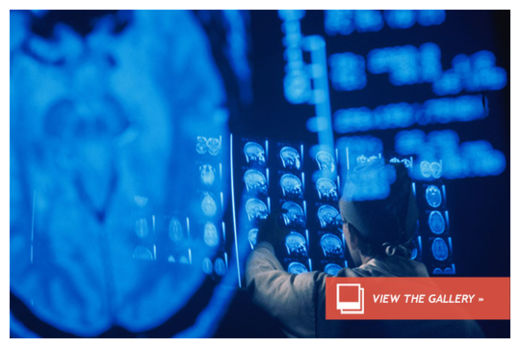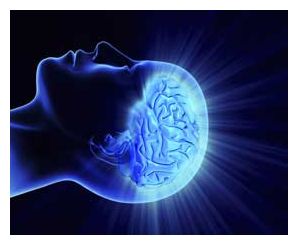
When doctors recently tested former Israeli Prime Minister Ariel Sharon brain with a functional MRI, they found "robust" brain activity when he was shown pictures of his family and heard his son's voice. A stroke and brain hemorrhage left Sharon in a coma seven years ago.
While the findings don't change the prognosis of many patients, doctors are excited because the technology could foster a primitive form of communication with patients who are minimally conscious. It could also help prevent and correct misdiagnosis of patients who appear to be in comas, but are actually in a "locked-in" state.
"It's like watching the top of the ocean and thinking you can understand what goes on under the waves," said Dr. Peter Nakaji, a neurosurgeon at the Barrow Neurological Institute in Phoenix, of the bedside techniques commonly used in clinics. He and others are hopeful that new techniques could provide a glimpse into the deeper realms of the brain.
The fMRI technology has been used in brain mapping research since the early 1990s, helping detect the onset of Alzheimer's and providing key information to brain surgeons about where to operate, but researchers in the United Kingdom and Belgium made a breakthrough discovery by applying the technology to patients who could not communicate at the bedside.
Knowing that 40 percent of patients with disorders of consciousness are misdiagnosed, the researchers designed an experiment to see if they could learn more about how their subjects' brains were functioning. When 54 patients -- in vegetative or minimally conscious states -- were asked to imagine hitting a tennis ball, the appropriate area lit up on the image of the brains of five of them. One of the patients was able to use the technique to answer yes or no questions. The study was published in The New England Journal of Medicine in 2010.
What actually goes on in the brains of patients with disorders of consciousness depends on where they fall on the spectrum of unconsciousness, although there is some grey area in the terminology of coma vs. vegetative state vs. minimally conscious.
In a comatose patient, brain activity is "dampened and slowed," Nakaji said, and the "light switch of the brain" -- the reticular activating system -- is not on. While it might seem like the person is sleeping, the brain is in a much different mode. The brain activity of a sleeping person is much more active than that of someone in a coma.
"When you're asleep, you're actually much more active than you might think," Nakaji said. For example, if you poke a sleeping person, he or she might swat at your hand. Someone in a coma would not respond except with a reflex movement.
Most patients don't remain in a true coma: they either die or move into a vegetative state. A patient is described as in a vegetative state when the arousal mode starts to kick in, but they are not able to interact with their environment. A vegetative patient's eyelids might flicker when someone walks in the room, for example.
"By definition, vegetative patients are not able to give any meaningful responses," said Dr. Romer Geocadin, associate professor of neurology at Johns Hopkins. "Vegetative patients are able to regain the ability to 'wake' up, but their brains are never able to interact with the environment or be aware. However, a vegetative patient can recover to a point that they can answer simple questions or follow simple commands. When they are able to do this, they are in a state known as minimally conscious ... at that time they are still severely incapacitated, but many may be able to respond to questions of prolonged life support."
And some patients who appear to be in comas actually have full brain capacity. Locked-in syndrome means that a patient cannot move except for blinking eyelids. When a patient in a locked-in state is diagnosed correctly, doctors and family can communicate through asking questions that can be answered by blinking yes and no responses. Twice, Geocadin and patients' families have taken patients off of life support by using the method to understand their wishes. The primitive form of communication can also be used to make the person more comfortable.
So what does Sharon's brain activity indicate?
"All we can tell from the report is that they are observing some brain activity in response to voice and images on the brain MRI," Geocadin said. "Given the extent of brain injury, it is extremely difficult to say where these observations of brain activity on MRI will lead in terms of recovery. Yes, this may bring some hope. But there is a very big gap between changes in brain activity to actually seeing a person regaining consciousness, enough to sit up and talk. Given the devastating stroke, this is unlikely to happen."




Reader Comments
to our Newsletter